
Salutations, my fellow scientists! We’re picking up our clipboards and breaking out the microscopes for the Steven Spielberg 2021 adaptation of the Romeo & Juliet retelling, West Side Story. In full disclosure, this will not be a double-blind study with any attempts at objectivity from this scientist. I don’t quite know what it is about West Side Story—perhaps the impressionable, tender age I was when I first viewed it, the flawless voice of Marni Noxon, or the complete, absurd melodrama of it all—but I flipping love this musical. I cry at Maria’s final speech every time. I get chills during certain songs. I know the 1961 movie version is not without it’s flaws, believe me, but when I heard Steven was giving it the Spielberg treatment, I was very against it. Agreeing to see it in the theater in January was a mix of a very emotionally low day and needing a pick-me-up, along with some extremely morbid curiosity.
…And, well, I’m not too proud to admit when I’m wrong. I’ve since learned that this is one of Spielberg’s favorite musicals, too, and since he has more money than he knows what to do with, he decided to make his own love letter to it.
So let’s get into it!
Spoilers, obvs.
Cast Story

Plucked from YouTube into her first leading role, Rachel has a youthful beauty that makes you understand why Tony would be instantly enamored with her, and her voice is so, so lovely for the role. Her Maria is wonderful.
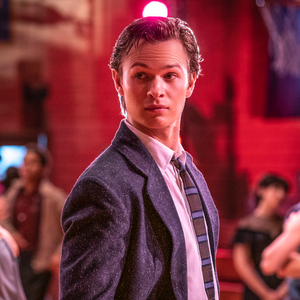
Sigh. I’ve never really been an Ansel fan before this, and after those assault allegations came out, I am definitely not now. To keep it about his performance: this is one of the only castings that feels like nepotism or because he was “a name” (though—is he?? Am I out of touch?). I wish they’d gone with another unknown like Rachel here. His voice isn’t as bad as I was expecting, but if you’re going to wow me with Rachel, then she deserved to have a proper singing partner. He’s also very tall and lanky (no hate–my husband is probably taller), and it didn’t feel like he knew what to DO with his body during certain scenes. He flopped about goofily and it took me out of the moment.
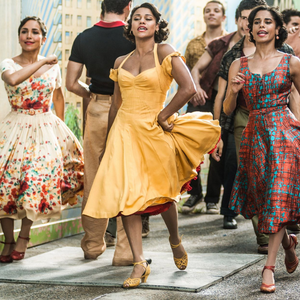
She just won an Oscar for Best Supporting Actress for this role, so it’s safe to say she did an amazing job. Ariana has the voice and the dance skills and she practically glows when on screen. I covet her dancing dresses.

Whatever that “it” factor is that makes someone eminently watchable, Mike’s got it. I’ve never cared more for Riff than I did while watching his version.
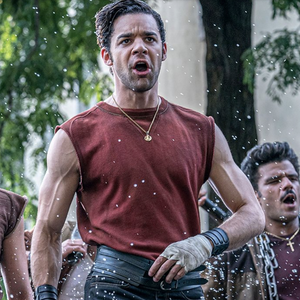
I loved David’s Bernardo, too. He’s sexy and pig-headed, but you can see how much he cared about his family.
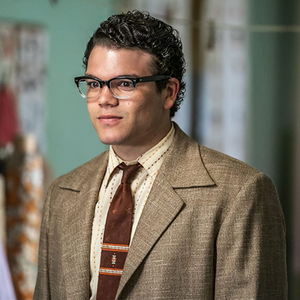
I know Chino ultimately shoots Tony, which is kind of a big deal, but he was almost a non-entity in the ’61 version. But with the small changes Spielberg made to the character, plus the way Josh’s earnestness morphs into his overwhelming grief as the movie goes on—I had actual feels for Chino and his tragic outcome.
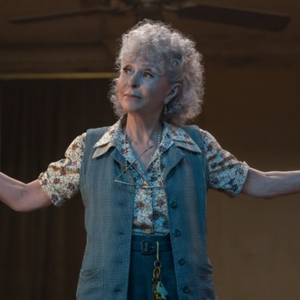
Having Valentina run the drug store, Doc’s, instead of some dude was a perfect update to the story. Rita’s still got it!
Reactions Story
- The visuals of the stage and film adaptations are so iconic that Spielberg was damned if he changed it (how DARE he) and damned if he didn’t (the trailer got a lot of shit because it felt like a shot-for-shot remake). Essentially, it IS a very faithful remake, but I must admit Spielberg put his modern spin on it with interesting camera angles, better lighting and grandiose sets, plus a real talent for capturing the dreaminess of the musical numbers. For example, taking “America” out to the streets during the day instead of at night, on top of Anita and Bernardo’s apartment building, made it so grand and bombastic. There is an element of realness to this film that the ballet-esque, stylized version from 1961 would never have pulled off, and I didn’t know I wanted it until I saw it.
- The film doesn’t try to change any huge plot beats or butcher the songs into new arrangements, but instead adds smaller moments of dialogue to provide more context to characters. Again, something I had no idea the story sorely needed until it was there. Perfect example: when we meet Chino for the first time, we’re given so much in just a few lines about who he is: Bernardo’s shy best friend who doesn’t dance, is going to night school and longs to be in the Sharks but isn’t allowed because Bernardo wants Chino (and, by extension, Maria) to have a better life. So when we see Chino again, throwing down his jacket and dancing with abandon at the gym dance, or when he’s cradling Bernardo’s lifeless body to his chest while everyone else fights at the rumble, we suddenly feel real empathy for him. He’s Bernardo’s Tony. You can understand why, after that, he felt the only option was to shoot Tony, the person who stole his best friend from him, and, in the process, ruin his entire life.
- It even works in Tony’s favor, because despite being a main character he was always kind of bland. We knew before he felt like he “outgrew” the Jets, but here we learn the why: he went to prison for a year after almost killing a kid from another gang, and that’s what has been weighing on him to reevaluate his life and try to be better. It’s a small thing but I think it gives him more gravitas and explains some of the intensity of his feelings towards Maria. Yes, she’s lovely, but in his desperate eyes she’s also part of his chance at redemption.
- Speaking of the script, I love that they intentionally chose not to subtitle when characters were speaking Spanish. They wanted it to be more inclusive and not put emphasis on one language or another, and I still think it was very easy to follow in context despite my very rudimentary Spanish skills.
- I also liked the inclusion of explicitly stating Anybodys was trans, and while things were still tough for them, the movie itself wasn’t passing judgments about them.
Adaptation Story
- I love, loved Maria and Tony going to the Cloisters and that’s where they get “married” and sing “One Hand, One Heart” instead of in the dress shop. The Cloisters are beautiful, plus with the addition of them chatting on the subway about their respective gang family members and the rumble situation, it gave the lovebirds some much-needed screen time to help you understand why they would risk it all for each other.
- On the flip side, they give the Tony/Maria duet, “Somewhere” to Rita Morena while she sings over a montage of the couple. It’s sweet, I’ll give them that, but I think I prefer Tony and Maria getting a bit more screen time together as they grow increasingly desperate and indulge in their delusional hopes. All the other songs are sung directly in the moment, so this voiceover (songover?) feels a bit out of place for me.
- One great song change was “Cool”, reinvented as a warning Tony sings to Riff when he realizes Riff has acquired a gun for the rumble. In the original, it is sung by random Jets members right after Riff and Bernardo have died and kind of stalls the action. It was never my favorite. The change up was SO SMART. It moves to pre-rumble, thus keeping up the momentum of the last third of the story, and it gives a song back to a relevant main character to deepen the bond of Tony and Riff’s friendship. The choreography as they jump around a half-demolished building by the ocean trying to take the gun from each other was much more visually interesting than setting it in a dark parking garage.
- Speaking of demolished buildings, this is probably one of my favorite things I learned after watching the remake. (Go check out Be Kind Rewind’s analysis as they explained it much better than I’m about to.) The newer movie puts emphasis on the fact that the slums the Jets and Sharks are fighting over are set to be demolished, showing much of the area by Doc’s store is already rubble. The entire neighborhood eventually gets turned into the Lincoln Center for Performing Arts. I didn’t know this was actually a real thing that was happening while West Side Story was being created, meaning that the writers were pulling straight from the headlines, so this would’ve been very topical to filmgoers at the time despite the context being lost on us decades later (hence the choice to make it more deliberately obvious). Apparently they filmed some of the ’61 version on the real streets that were literally about to be torn down, which is why some of their “city” looks so vacant/barren. I love that it expands and contextualizes the viewpoint of the story.
Conclusions Story
All in all, this was an extremely successful adaptation. I know it didn’t perform at the box office like they would’ve hoped, but I think it will continue to get more recognition on a streaming platform. While I doubt it will herald in a new wave of musical cinema, I’m glad we finally got a movie adaptation that paid homage and care to its source material while improving on the bits that needed extra help.
Did you watch the new version? What were your thoughts? Join me in the comments!
This nails down a lot of how I felt about this iteration of WSS. In addition, while Ansel Elgort got blown off the screen by pretty much everyone on screen, it was SUPER-apparent when he and Mike Faist were on screen together.
Also, apparently Rachel Zegler is dating Josh Andres Rivera now? SO CUTE.
Chino gets his girl after all! 🥰
OMG, the disparity of charisma between the two. Mike Faist had SO much electricity with the camera–like, no joke, that first moment we see him when he’s sauntering out of the construction trailer (?) with his girl and it’s clear what they were JUST doing, I was like, why am I instantly kind of attracted to this guy?!